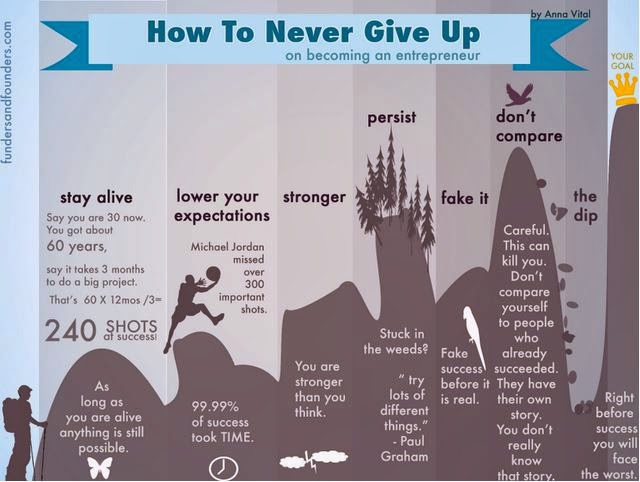 |
| from Lifehack.org |
MP1. Make sense of problems and persevere in solving them.
MP2. Reason abstractly and quantitatively.
MP3. Construct viable arguments and critique the reasoning of others.
MP4. Model with mathematics.
MP5. Use appropriate tools strategically.
MP6. Attend to precision.
MP7 Look for and make use of structure.
MP8 Look for and express regularity in repeated reasoning.
How do you scaffold grit and perseverance?
One more closing thought of pessimism related to the attached image. The first panel left me with an interesting thought. Sixty years of three-month-long attempts could almost mean 239 failures before success. I am not sure if that would be exhilarating or exhausting.
